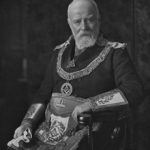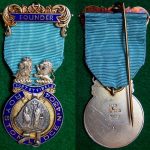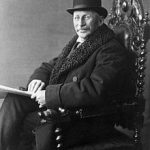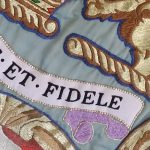The Royston Lodge Crest derives heraldic significance from the Arms borne by the family or Sir Charles Heaton-Ellis, the first master of the Lodge.

The Royston Lodge Crest can be traced back to the 16th Century where it was used to seal a Deed which renounced the authority or the Pope, acknowledged the supremacy of the King as head of the Church and the legitimacy of his marriage with Anne Boleyn. The Deed was sealed with a wax impression of the Priory seal.
The Royston Lodge Crest is a copy of that seal. The figure on the right is that of St. John the Baptist; he is in a loose vestment tucked up before, and bears erect in his right hand something resembling a twig, or tender branch, which bears leaves is probably the locust which was part of his food. On the left hand of the Cross is image of St. Thomas, Martyr of Canterbury, in his Pontificals. The two lions and the inscription Fort et Fidele (Strong and Faithful) are from the Arms of the first Master of the Lodge, Sir Charles Heaton-Ellis.
Lodge Crest Inscriptions
| Royston Lodge | Fort et Fidele (Strong and Faithful) |
| Layton Lodge | Stabilis in Fidele (Established in Faith) |
| Royston Chapter | Stabilitas et Fidelitas (Stability and Fidelity) |




